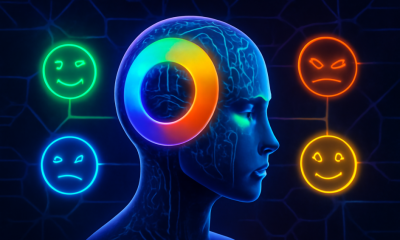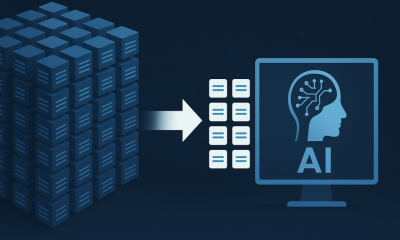Artificial Intelligence
The Mirage of AI Reasoning: Why Chain-of-Thought May Not Be What We Think

Large language models (LLMs) have impressed us with their ability to break down complex problems step by step. When we ask LLMs to solve a math problem, they now show their work, walking through each logical step before reaching an answer. This approach, called Chain-of-Thought (CoT) reasoning, has made AI systems appear more human-like in their thinking process. But what if this impressive reasoning ability is actually an illusion? New research from Arizona State University suggests that what looks like genuine logical thinking might be a sophisticated pattern matching technique. In this article, we will explore this discovery and analyze its implications on the way we design, evaluate, and trust AI systems.
The Problem with Current Understanding
Chain-of-thought prompting has become one of the most recognized advances in AI reasoning. It allows models to tackle everything from mathematical problems to logical puzzles by showing their work through intermediate steps. This apparent reasoning ability has led many to believe that AI systems are developing inferential capabilities similar to human thinking. However, researchers have started to question this belief.
In a recent study, they observed that when asked questions like whether the US was established in a leap year or a normal year, LLMs gave an inconsistent answer. While they correctly identify the reason that 1776 is divisible by 4 and state it was a leap year, the models still concluded that the US was established in a normal year. In this case, the models demonstrated knowledge of the rules and showed logical steps but reached a contradictory conclusion.
Such examples suggest there might be a fundamental gap between what appears to be reasoning and actual logical inference.
A New Lens for Understanding AI Reasoning
A key innovation of this research is the introduction of a “data distribution lens” to examine Chain-of-Thought (CoT) reasoning. Researchers hypothesized that CoT is an advanced pattern matching technique that operates on statistical regularities in training data, rather than true logical reasoning. The model generates reasoning paths that approximate what it has seen before, rather than performing logical operations.
To test this hypothesis, researchers created DataAlchemy, a controlled experimental environment. Instead of testing pretrained LLMs with their complex training histories, they trained smaller models from scratch on carefully designed tasks. This approach eliminates the complexity of large-scale pre-training and enables systematic testing of how distribution shifts affect reasoning performance.
The researchers focused on simple transformation tasks involving sequences of letters. For example, they taught models to apply operations like rotating letters in the alphabet (A becomes N, B becomes O) or shifting positions within a sequence (APPLE becomes EAPPL). By combining these operations, researchers have created multi-step reasoning chains of varying complexities. This approach gave them the advantage of precision. They can control exactly what the models learned during training and then test how well they generalized to new situations. This level of control is impossible with large commercial AI systems trained on massive, diverse datasets.
When AI Reasoning Breaks Down
The researchers tested CoT reasoning across three critical dimensions where real-world applications might differ from training data.
Task Generalization examined how models handle new problems they have never encountered before. When tested on transformations identical to training data, models achieved perfect performance. However, slight variations caused dramatic failures in their reasoning abilities. Even when the new tasks were compositions of familiar operations, the models failed to apply their learned patterns correctly.
One of the most concerning insights was how models often produced reasoning steps that were perfectly formatted and seemed logical but led to incorrect answers. In some cases, they generated correct answers through coincidence while following completely wrong reasoning paths. These findings suggest that models essentially match surface patterns rather than understanding underlying logic.
Length Generalization tested whether models could handle reasoning chains longer or shorter than those in training. Researchers found that models trained on length 4 completely failed when tested on lengths 3 or 5, despite these being relatively minor changes. Additionally, the models would attempt to force their reasoning into the familiar pattern length by adding or removing steps inappropriately rather than adapting to the new requirements.
Format Generalization assessed sensitivity to surface-level variations in how problems are presented. Even minor changes like inserting noise tokens or slightly modifying the prompt structure caused significant performance degradation. This revealed how dependent the models are on exact formatting patterns from training data.
The Brittleness Problem
Across all three dimensions, the research revealed a consistent pattern: CoT reasoning works well when applied to data similar to training examples but becomes fragile and prone to failure even under moderate distribution shifts. The apparent reasoning ability is essentially a “brittle mirage” that vanishes when models encounter unfamiliar situations.
This brittleness can manifest itself in several ways. Models can generate fluent, well-structured reasoning chains that are completely wrong. They may follow perfect logical form while missing fundamental logical connections. Sometimes they produce correct answers through mathematical coincidence while demonstrating flawed reasoning processes.
The research also showed that supervised fine-tuning on small amounts of new data can quickly restore performance, but this merely expands the model's pattern-matching repertoire rather than developing genuine reasoning abilities. It is like learning to solve a new type of math problem by memorizing specific examples rather than understanding the underlying mathematical principles.
Real-World Implications
These findings could have serious implications for how we deploy and trust AI systems. In high-stakes domains like medicine, finance, or legal analysis, the ability to generate plausible-sounding but fundamentally flawed reasoning could be more dangerous than simple incorrect answers. The advent of logical thinking might lead users to place unwarranted trust in AI conclusions.
The research suggests several important guidelines for AI practitioners. First, organizations should not treat CoT as a universal problem-solving solution. Standard testing approaches that use data similar to training sets are insufficient for evaluating true reasoning capabilities. Instead, rigorous out-of-distribution testing is essential to understand model limitations.
Second, the tendency for models to generate “fluent nonsense” requires careful human oversight, especially in critical applications. The coherent structure of AI-generated reasoning chains can mask fundamental logical errors that might not be immediately apparent.
Looking Beyond Pattern Matching
Perhaps most importantly, this research challenges the AI community to move beyond surface-level improvements toward developing systems with genuine reasoning capabilities. Current approaches that rely on scaling up data and parameters may hit fundamental limits if they are primarily sophisticated pattern-matching systems.
The work does not diminish the practical utility of current AI systems. Pattern matching at scale can be remarkably effective for many applications. However, it highlights the importance of understanding the true nature of these capabilities rather than attributing human-like reasoning where none exists.
The Path Forward
This research opens important questions about the future of AI reasoning. If current approaches are fundamentally limited by their training distributions, what alternative approaches might lead to more robust reasoning capabilities? How can we develop evaluation methods that distinguish between pattern matching and genuine logical inference?
The findings also emphasize the importance of transparency and proper evaluation in AI development. As these systems become more sophisticated and their outputs more convincing, the gap between apparent and actual capabilities may become increasingly dangerous if not properly understood.
The Bottom Line
Chain-of-Thought reasoning in LLMs often reflects pattern matching rather than true logic. While the outputs may look convincing, they can fail under new conditions, raising concerns for critical fields like medicine, law, and science. This research underscores the need for better testing and more reliable approaches to AI reasoning.












